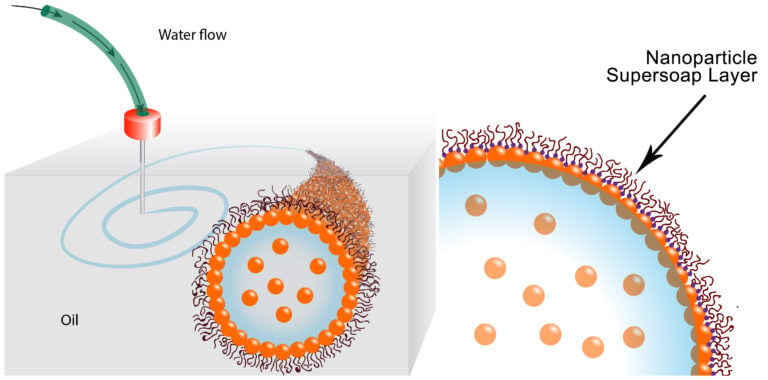- Get link
- X
- Other Apps
- Get link
- X
- Other Apps

Can I print with water? It would seem a stupid question: naturally, no, because at first glance, in none of the three aggregate states, water is unsuitable for printing, and what use is this? However, scientists from the Lawrence National Laboratory in Berkeley not only found a way to implement a seemingly insane venture, but also threatened to make with the help of their invention a real revolution in electronics, pharmaceuticals and medicine.
The development team is responsible for a group of researchers led by Tom Russell, and at the moment they were able to print water strands with a diameter of 10 micrometers to 1 millimeter and several meters in length. The technology of printing is based on the preservation of a stable form of a suspension of water molecules in mineral oil. This structure, among other things, has the ability to deform and shape memory.
"We created a completely new class of materials. To produce them, we used a mineral oil base with the addition of hydrophobic polymer molecules, as well as "ink" from water with the addition of hydrophilic gold particles. Polymer molecules combine with gold, forming a "needle", one part of which is hydrophobic, and the other - hydrophilic ".
Thus, the resulting structure has the properties of a surfactant. At the border of water and oil, they form a structure, one part of which "loves" water, and the other - oil. Due to this, it is possible to create threads inside the oil from the water.

Scheme of technology of 3D printing with water in oil: when filled with water, gold particles surround it and form a layer of elastic film at the phase interface
For the printing itself, a standard 3D printer was modified: a syringe with a very thin needle through which water was fed was added to its design. Under the necessary pressure, a jet of water forms a thin tube in the oil layer. The resulting filament has good electrical conductivity, which can be used to create electronic circuits, including in flexible electronics. Such devices can be useful in creating medical gadgets that are resistant to stretching and compression (for example, for attaching to the skin or bending surfaces).

The article is based on materials .
- Get link
- X
- Other Apps
Comments
Post a Comment